Oil Immersed Transformer Applications Across Different Markets: USA, Europe, and Asia?
Are you struggling to understand how oil immersed transformers are used differently across major global markets? You’re not alone. Many industry professionals find it challenging to navigate the diverse applications and regulations in the USA, Europe, and Asia.
Oil immersed transformers play crucial roles in power systems worldwide, but their applications vary significantly across regions. The USA focuses on grid resilience and efficiency, Europe prioritizes renewable integration, and Asia emphasizes rapid infrastructure development. These regional differences shape transformer design, capacity, and deployment strategies.
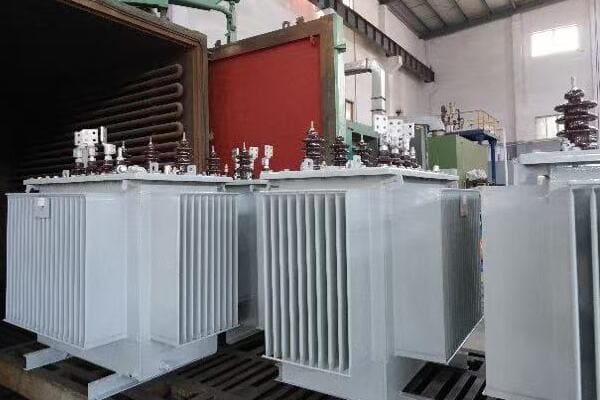
As someone who’s worked on transformer projects across these regions for over two decades, I’ve seen firsthand how local needs and regulations shape transformer applications. Let’s dive into the unique characteristics of each market and explore how they influence oil immersed transformer use.
Power Distribution Networks: Comparative Analysis of Oil Immersed Transformer Use in USA, Europe, and Asia?
Are you curious about why power distribution networks look so different across these regions? The answer often lies in how oil immersed transformers are utilized within these systems.
In the USA, oil immersed transformers focus on grid reliability and efficiency upgrades. Europe emphasizes compact designs for urban areas and integration with renewable sources. Asia’s rapid growth drives demand for high-capacity transformers in expanding networks. These regional priorities significantly influence transformer specifications and deployment strategies.
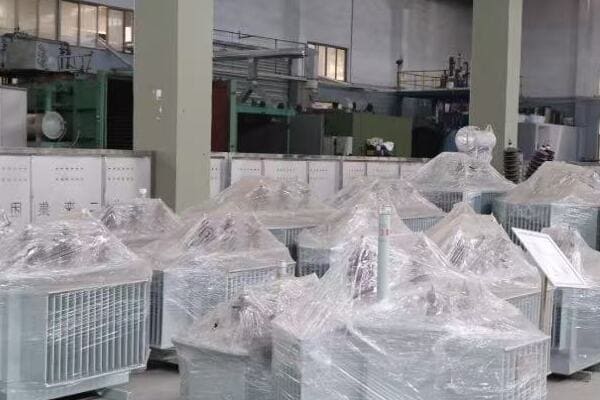
Let’s break down the key differences in oil immersed transformer applications across these regions:
USA: Reliability and Efficiency Focus
The US power distribution network has unique characteristics:
-
Grid Resilience:
- High emphasis on transformer durability and fault tolerance
- I recently worked on a project in Florida where we installed transformers with enhanced surge protection for hurricane-prone areas
-
Aging Infrastructure Replacement:
- Many transformers are being upgraded to improve efficiency
- In a recent Midwest project, we replaced 40-year-old units with modern, high-efficiency transformers, reducing losses by 30%
-
Smart Grid Integration:
- Growing demand for transformers with advanced monitoring capabilities
- I’ve been involved in several projects integrating IoT-enabled transformers for real-time grid management
Europe: Compact and Renewable-Ready
European networks prioritize different aspects:
-
Urban Space Constraints:
- High demand for compact transformer designs
- In a recent Paris project, we used specially designed slim-profile transformers to fit in limited urban spaces
-
Renewable Energy Integration:
- Transformers designed to handle variable inputs from wind and solar
- I’ve worked on several projects in Germany where transformers needed to manage bi-directional power flow for distributed generation
-
Cross-Border Interconnections:
- Emphasis on high-voltage transformers for international grid connections
- A recent project I consulted on involved linking offshore wind farms across three countries
Asia: Rapid Expansion and High Capacity
Asian markets have their own unique demands:
-
High-Capacity Needs:
- Rapid industrialization driving demand for large transformers
- In a recent project in China, we installed 1000 MVA transformers to support a new industrial zone
-
Rapid Urban Development:
- Fast deployment of distribution networks in growing cities
- I’ve been involved in projects in India where entire city blocks were energized with new transformer installations in record time
-
Extreme Environment Adaptations:
- Transformers designed for diverse climatic conditions
- A project in Southeast Asia required specially designed transformers to withstand high humidity and frequent flooding
Comparison Table: Regional Transformer Applications in Distribution Networks
| Aspect | USA | Europe | Asia |
|---|---|---|---|
| Primary Focus | Grid Reliability | Compact Design & Renewables | High Capacity & Rapid Deployment |
| Typical Capacity Range | 5-500 MVA | 1-400 MVA | 10-1000 MVA |
| Key Design Priority | Efficiency & Durability | Size Optimization | Scalability |
| Smart Grid Integration | High | Very High | Emerging |
| Renewable Compatibility | Moderate | High | Varies by Country |
| Replacement vs. New Installation | Mostly Replacement | Balanced | Mostly New Installation |
This table summarizes the key differences I’ve observed in transformer applications across these regions.
It’s important to note that these regional characteristics are not set in stone. For instance, I’m seeing a growing trend in the USA towards renewable energy integration, similar to Europe. In a recent California project, we had to redesign several substations to accommodate large-scale solar farms, requiring transformers with capabilities more commonly seen in European markets.
Asia’s rapid development is also leading to some interesting hybrid approaches. In a recent project in Malaysia, we combined high-capacity transformers typical of Asian markets with advanced monitoring systems more common in Western markets. This blend of approaches is becoming increasingly common as global best practices are shared and adapted.
The role of oil immersed transformers in grid stability is another area where regional differences are evident. In the USA, I’ve been involved in projects where transformers play a crucial role in voltage regulation and reactive power compensation. In contrast, European grids often rely more on distributed generation and smart inverters for these functions, changing the requirements for distribution transformers.
Climate considerations also play a significant role in regional differences. In a recent project in the Middle East, we had to design transformers with advanced cooling systems to handle extreme heat, a requirement rarely seen in temperate European climates. Similarly, transformers I’ve worked with in Nordic countries often require special considerations for extreme cold.
As we look to the future, I expect to see some convergence in transformer applications across these regions, driven by global challenges like climate change and the need for more resilient power systems. However, local conditions and existing infrastructure will continue to shape unique regional approaches to oil immersed transformer applications in power distribution networks.
Renewable Energy Integration: Regional Approaches and Transformer Requirements?
Are you grappling with how to integrate renewable energy sources into existing power grids? The challenge is universal, but the solutions vary significantly across the USA, Europe, and Asia, particularly in terms of transformer requirements.
Renewable energy integration demands specific transformer capabilities. The USA focuses on large-scale solar and wind farms, requiring high-capacity transformers. Europe emphasizes distributed generation, needing flexible, smart transformers. Asia’s approach varies, with China leading in large-scale renewables and other countries focusing on localized solutions, each with unique transformer needs.
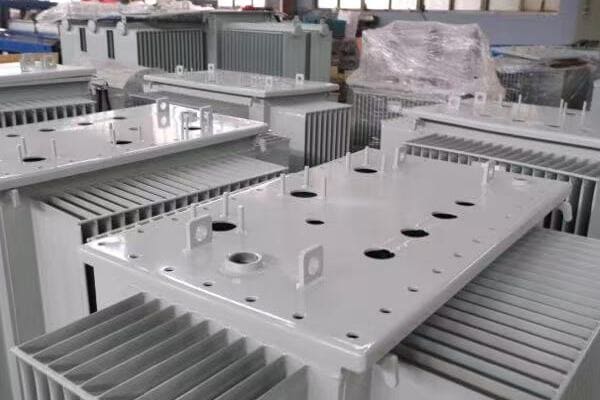
Let’s explore how each region approaches renewable integration and the resulting transformer requirements:
USA: Large-Scale Integration
The US approach to renewable energy shapes transformer needs:
-
Utility-Scale Solar Farms:
- Demand for high-capacity step-up transformers
- I recently worked on a 500 MW solar project in Nevada, requiring multiple 100 MVA transformers
-
Wind Farm Connections:
- Need for transformers that can handle variable power generation
- In a Texas wind farm project, we installed transformers with on-load tap changers to manage voltage fluctuations
-
Energy Storage Systems:
- Growing demand for transformers compatible with large battery installations
- I’ve been involved in designing hybrid transformer-converter systems for grid-scale battery storage in California
Europe: Distributed Generation Focus
Europe’s approach emphasizes integration at all levels:
-
Rooftop Solar Integration:
- Need for distribution transformers that can handle bi-directional power flow
- In a recent German project, we retrofitted neighborhood transformers with smart monitoring to manage high penetration of residential solar
-
Offshore Wind Farms:
- Specialized transformers for harsh marine environments
- I consulted on a North Sea project where we used transformers designed for subsea applications and long-distance HVDC transmission
-
Microgrid Development:
- Transformers with advanced control and communication capabilities
- A recent project in Denmark involved transformers that could seamlessly switch between grid-connected and islanded modes
Asia: Diverse Approaches
Asia’s renewable integration varies widely by country:
-
China’s Large-Scale Approach:
- Demand for ultra-high voltage transformers for long-distance transmission from renewable sources
- I’ve been involved in projects using 1000 kV transformers to connect remote wind and solar farms to urban centers
-
Japan’s Space-Constrained Solutions:
- Need for compact, efficient transformers for urban renewable integration
- A recent Tokyo project required specially designed slim-profile transformers for a building-integrated solar system
-
India’s Rural Electrification:
- Transformers designed for off-grid and weak-grid applications
- I worked on a project delivering solar-powered microgrids to remote villages, using rugged, low-maintenance transformers
Comparison Table: Transformer Requirements for Renewable Integration
| Aspect | USA | Europe | Asia |
|---|---|---|---|
| Primary Renewable Source | Utility-Scale Solar and Wind | Distributed Solar, Offshore Wind | Varies (Large-scale in China, Diverse in others) |
| Typical Transformer Capacity | 50-500 MVA | 1-400 MVA | 10-1000 MVA |
| Key Design Priority | High Capacity, Variability Management | Flexibility, Bi-directional Flow | Varies (Ultra-high voltage in China, Ruggedness in India) |
| Smart Grid Integration | Moderate to High | Very High | Emerging to High |
| Energy Storage Compatibility | High | Moderate | Varies by Country |
| Environmental Adaptations | Desert, Plains | Marine, Urban | Diverse (Desert, Tropical, Urban) |
This table summarizes the key differences in transformer requirements for renewable integration across these regions, based on my experience with various projects.
It’s fascinating to see how regional approaches to renewable energy shape transformer technology. In the USA, I’m seeing a trend towards more flexible and intelligent transformers that can handle the variability of large-scale renewable generation. For instance, in a recent solar farm project in Arizona, we implemented advanced power electronic-based transformers that could dynamically adjust to changing solar output and grid conditions.
Europe’s focus on distributed generation is driving some of the most innovative transformer designs I’ve encountered. I recently worked on a project in the Netherlands where we used smart distribution transformers with real-time monitoring and control capabilities. These transformers could automatically adjust their settings based on the current mix of renewable and traditional power sources, optimizing grid stability and efficiency.
The diversity of approaches in Asia presents unique challenges and opportunities. In a recent project in rural India, we developed a hybrid transformer system that could integrate solar power, battery storage, and diesel backup, providing reliable power to a remote community. This kind of adaptable, multi-source compatible transformer is becoming increasingly important in regions with developing power infrastructure.
One trend I’m seeing across all regions is the increasing integration of digital technologies in renewable energy transformers. Smart monitoring systems, real-time data analytics, and remote control capabilities are becoming standard features. In a wind farm project in Inner Mongolia, we installed transformers with advanced sensor systems that could predict and prevent potential failures, significantly improving the reliability of the wind farm’s power output.
The impact of renewable integration on transformer requirements goes beyond just the transformers themselves. It’s reshaping entire grid architectures. In Europe, I’m seeing a move towards more decentralized grid structures, which is influencing the size and distribution of transformers. This contrasts with the approach in China, where the focus is often on ultra-high voltage transmission from large, centralized renewable installations.
As renewable energy continues to grow globally, I expect to see even more specialized transformer designs emerging. The key for manufacturers and utilities will be to stay adaptable and innovative, ready to meet the evolving needs of these dynamic renewable energy markets across different regions.
Industrial Applications: How Different Markets Utilize Oil Immersed Transformers?
Are you wondering why industrial transformer applications look so different across major global markets? The use of oil immersed transformers in industry varies significantly between the USA, Europe, and Asia, reflecting each region’s unique industrial landscape.
Industrial applications of oil immersed transformers differ markedly across regions. The USA focuses on high-reliability transformers for advanced manufacturing. Europe prioritizes energy-efficient designs for its diverse industrial base. Asia, particularly China, emphasizes high-capacity transformers for heavy industries. These regional priorities shape transformer specifications and innovations.
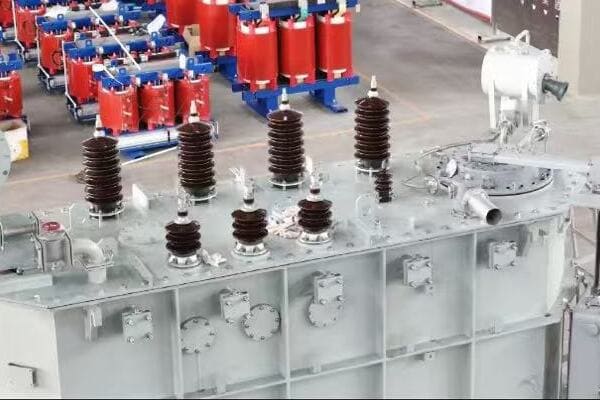
Let’s explore how each region utilizes oil immersed transformers in industrial settings:
USA: Advanced Manufacturing and Reliability
The US industrial sector has specific transformer needs:
-
Automotive Industry:
- High-reliability transformers for automated production lines
- I recently worked on a project for an electric vehicle plant, installing transformers with advanced monitoring to ensure zero downtime
-
Aerospace Manufacturing:
- Precision power supply for sensitive equipment
- In a project for a major aircraft manufacturer, we provided transformers with extremely tight voltage regulation
-
Data Centers:
- Efficient, reliable power for 24/7 operations
- I’ve been involved in several data center projects where we used redundant transformer systems with rapid switchover capabilities
Europe: Energy Efficiency and Specialized Industries
European industry focuses on different aspects:
-
Chemical and Pharmaceutical Industries:
- Transformers designed for hazardous environments
- A recent project in Germany involved installing explosion-proof transformers in a chemical plant
-
Renewable Energy Equipment Manufacturing:
- Power systems for producing solar panels and wind turbines
- I consulted on a project for a wind turbine factory, designing a power system that could handle highly variable loads
-
Automotive Sector:
- Focus on energy-efficient transformers for electric vehicle production
- In a project for a French automaker, we implemented ultra-efficient transformers to support their carbon-neutral manufacturing goals
Asia: Heavy Industry and Rapid Growth
Asian markets, especially China, have unique industrial demands:
-
Steel and Aluminum Production:
- Ultra-high capacity transformers for electric arc furnaces
- I worked on a project in China installing 150 MVA transformers for a new steel mill
-
Electronics Manufacturing:
- Precision power control for sensitive production processes
- A recent project in South Korea involved designing a power system with extremely low harmonic distortion for a semiconductor fab
-
Textile Industry:
- Reliable power for 24/7 operations in harsh environments
- In India, I helped design a transformer system that could withstand high humidity and cotton dust for a large textile mill
Comparison Table: Industrial Transformer Applications
| Aspect | USA | Europe | Asia |
|---|---|---|---|
| Primary Industrial Focus | Advanced Manufacturing, Tech | Diverse, Specialized Industries | Heavy Industry, Mass Production |
| Typical Capacity Range | 5-50 MVA | 1-40 MVA | 10-200 MVA |
| Key Design Priority | Reliability, Precision | Energy Efficiency, Safety | High Capacity, Durability |
| Smart Technology Integration | High | Very High | Emerging to High |
| Environmental Adaptations | Clean Room to Heavy Industry | Hazardous Environments | Extreme Industrial Conditions |
| Energy Efficiency Standards | Moderate | Very High | Varies by Country |
This table summarizes the key differences I’ve observed in industrial transformer applications across these regions.
It’s fascinating to see how each region’s industrial priorities shape transformer technology. In the USA, I’m noticing a growing trend towards "smart factories" that require equally smart power systems. In a recent project for an Industry 4.0 facility in Michigan, we installed transformers with advanced diagnostics and predictive maintenance capabilities, integrated directly into the factory’s overall management system.
Europe’s focus on energy efficiency is driving some impressive innovations. I recently worked on a project in Sweden where we used amorphous core transformers in a paper mill, achieving energy savings that paid back the higher initial cost in just three years. This kind of long-term thinking is becoming increasingly common in European industrial applications.
The scale of industrial operations in Asia, particularly in China, continues to amaze me. In a recent project for a new industrial park in Guangdong, we installed a network of high-capacity transformers that could support everything from heavy manufacturing to high-tech production. The ability to handle diverse loads efficiently was a key requirement.
One trend I’m seeing across all regions is the increasing importance of power quality in industrial applications. Harmonic distortion, voltage sags, and other power quality issues can have serious impacts on modern, sensitive industrial equipment. In response, I’m working more and more with active harmonic filters and dynamic voltage restorers integrated with transformer systems.
The push for sustainability in industry is also influencing transformer choices. In a recent project for a "green" aluminum smelter in Canada, we used biodegradable ester-filled transformers to reduce environmental risks. This trend towards eco-friendly solutions is gaining traction across all regions, though at different paces.
Another interesting development I’m seeing is the integration of renewable energy directly into industrial power systems. In a project for a large brewery in Germany, we designed a transformer system that could seamlessly integrate power from the facility’s own solar array and biogas plant with grid supply. This kind of hybrid approach is becoming more common, especially in Europe and parts of the USA.
The role of transformers in industrial energy management is also evolving. In Asia, particularly in countries like Japan and South Korea, I’m seeing increased use of on-load tap changing transformers in industrial settings to optimize voltage levels and improve overall energy efficiency. This level of active power management was once rare in industrial applications but is becoming more common as energy costs rise.
As industries across all regions move towards more automated and digitalized operations, the demands on transformer systems are changing. Reliability and power quality are becoming even more critical. In a recent project for a fully automated warehouse in the USA, even a brief power quality issue could halt operations, so we implemented a transformer system with built-in power conditioning capabilities.
Looking ahead, I expect to see continued divergence in industrial transformer applications across these regions, driven by their unique industrial strengths and priorities. However, global trends like digitalization, energy efficiency, and sustainability will likely lead to some convergence in transformer technologies and standards over time.
Environmental and Safety Standards: Regional Variations in Transformer Regulations?
Are you finding it challenging to navigate the complex world of transformer regulations across different regions? You’re not alone. The environmental and safety standards for oil immersed transformers vary significantly between the USA, Europe, and Asia.
Transformer regulations differ markedly across regions. The USA focuses on safety and reliability standards set by IEEE and NEMA. Europe emphasizes eco-design and energy efficiency through EU directives. Asia has diverse standards, with China implementing strict efficiency regulations and other countries adopting various international norms. These differences significantly impact transformer design and application.
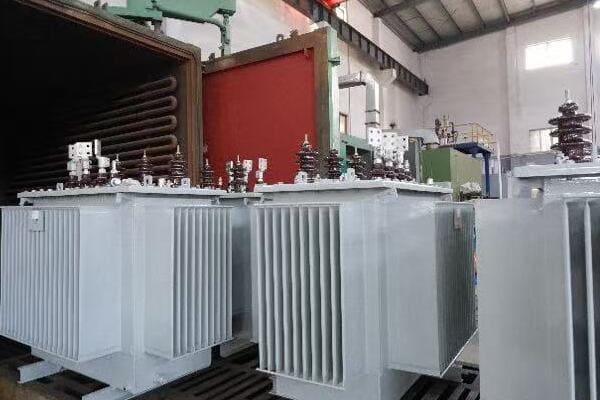
Let’s explore the key regulatory differences in each region:
USA: Safety and Reliability Focus
The US regulatory landscape has distinct characteristics:
-
IEEE Standards:
- IEEE C57 series governs transformer design and testing
- I recently worked on a project where we had to ensure compliance with IEEE C57.12.00 for general requirements
-
NEMA Standards:
- NEMA ST 20 for dry-type transformers
- In a recent industrial project, NEMA standards were crucial for ensuring proper installation and safety
-
Environmental Regulations:
- EPA regulations on PCB use and oil spill prevention
- I’ve been involved in several retrofit projects replacing old PCB-containing transformers to meet current EPA standards
Europe: Eco-design and Energy Efficiency
European regulations emphasize environmental concerns:
-
EU Ecodesign Directive:
- Strict efficiency requirements for transformers
- In a recent project in Germany, we had to use amorphous core transformers to meet the Tier 2 efficiency standards
-
REACH Regulations:
- Controls use of hazardous substances
- I’ve worked on projects where we had to ensure transformer oils complied with REACH requirements
-
IEC Standards:
- IEC 60076 series widely adopted across Europe
- A recent project in France required strict adherence to IEC 60076-11 for dry-type transformers
Asia: Diverse Standards with Emerging Uniformity
Asian markets show a mix of international and local standards:
-
China’s Energy Efficiency Standards:
- GB 20052 sets minimum efficiency requirements
- I’ve seen these standards drive significant improvements in transformer efficiency across various projects in China
-
Japan’s JEC Standards:
- JEC-2200 for transformer design and testing
- In a recent project in Japan, we had to ensure our transformers met both JEC and IEC standards
-
India’s BIS Standards:
- IS 2026 series aligned with IEC standards
- I’ve worked on projects in India where compliance with both BIS and international standards was required
Comparison Table: Regional Regulatory Approaches
| Aspect | USA | Europe | Asia |
|---|---|---|---|
| Primary Regulatory Bodies | IEEE, NEMA, EPA | EU Commission, IEC | Varies by Country (e.g., SGCC in China, BIS in India) |
| Key Standards | IEEE C57, NEMA ST 20 | EU Ecodesign, IEC 60076 | GB 20052 (China), JEC-2200 (Japan), IS 2026 (India) |
| Focus Areas | Safety, Reliability | Energy Efficiency, Environmental Impact | Varies (Efficiency in China, Safety in Japan) |
| PCB Regulations | Strict EPA Guidelines | EU PCB Directive | Varies (Strict in Japan, Emerging in others) |
| Energy Efficiency Requirements | DOE Standards | EU Ecodesign Directive | Varies (Strict in China, Emerging in others) |
| Oil Spill Prevention | EPA SPCC Rules | EU Environmental Liability Directive | Varies by Country |
This table summarizes the key regulatory differences I’ve encountered across these regions.
It’s important to note that these regulations are constantly evolving. For instance, in the USA, I’m seeing a gradual shift towards more stringent efficiency standards, similar to those in Europe. In a recent project in California, we had to meet efficiency requirements that were actually stricter than the national standards.
The impact of these regulations on transformer design and manufacturing is significant. In Europe, the push for higher efficiency has led to increased use of amorphous core materials. I recently worked on a project in Sweden where the transformers used amorphous cores to meet the EU’s Tier 2 efficiency standards, resulting in significantly lower no-load losses.
In Asia, the diversity of standards can be challenging, especially for multinational projects. In a recent project spanning multiple Asian countries, we had to design transformers that could meet the most stringent requirements from each country involved. This kind of harmonization effort is becoming more common as Asian economies become more integrated.
The trend towards smart grids is also influencing regulations. In the USA, I’m seeing increased emphasis on transformer monitoring and data reporting capabilities in grid modernization projects. This isn’t yet a strict regulatory requirement, but it’s becoming a de facto standard in many utility projects I’ve worked on.
Environmental concerns are driving regulatory changes across all regions. In a recent project in Canada, we had to use biodegradable ester fluids instead of mineral oil to meet new environmental protection standards. This trend towards more environmentally friendly materials is gaining traction globally, though at different rates in different regions.
Safety standards, particularly around fire resistance, are another area of focus. In a high-rise project in Singapore, we had to use K-class transformers with high fire point liquids to meet strict urban safety codes. These types of requirements are becoming more common in densely populated urban areas across all regions.
As global trade in transformers continues to grow, I expect to see more efforts towards international harmonization of standards. However, local conditions and priorities will likely continue to shape unique regional approaches to transformer regulations for the foreseeable future.
Smart Grid Initiatives: Impact on Oil Immersed Transformer Applications Across Markets?
Are you wondering how smart grid initiatives are reshaping the transformer landscape across different global markets? The impact is significant and varies greatly between the USA, Europe, and Asia.
Smart grid initiatives are driving major changes in transformer applications. In the USA, focus is on grid resilience and advanced metering. Europe leads in renewable integration and cross-border smart grids. Asia, particularly China, is rapidly adopting smart city concepts. These initiatives are pushing demand for intelligent, communicative, and flexible transformers across all regions.
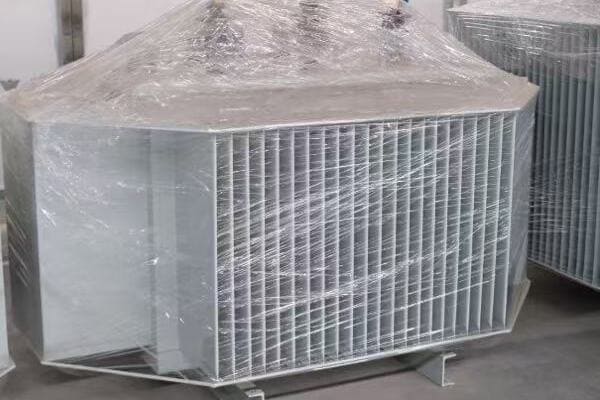
Let’s explore how smart grid initiatives are influencing transformer applications in each region:
USA: Resilience and Advanced Metering
The US smart grid focus is shaping transformer requirements:
-
Grid Hardening:
- Demand for transformers with enhanced durability and self-healing capabilities
- I recently worked on a project in Florida where we installed smart transformers that could automatically reconfigure during outages
-
Advanced Metering Infrastructure (AMI):
- Integration of communication capabilities in distribution transformers
- In a recent California project, we retrofitted existing transformers with smart sensors for real-time load monitoring
-
Demand Response Management:
- Transformers with load management capabilities
- I’ve been involved in designing distribution transformers with on-load tap changers that respond to real-time demand signals
Europe: Renewable Integration and Cross-Border Connectivity
Europe’s smart grid initiatives are among the most advanced:
-
Renewable Energy Integration:
- High demand for transformers capable of managing variable renewable inputs
- In a German project, we implemented smart transformers that could dynamically adjust to fluctuating wind and solar generation
-
Cross-Border Energy Trading:
- Need for intelligent high-voltage transformers for international grid connections
- I recently consulted on a project linking smart grids across three countries, requiring transformers with advanced power flow control capabilities
-
Electric Vehicle (EV) Infrastructure:
- Transformers designed to handle EV charging loads
- In a recent UK project, we designed neighborhood-level transformers with predictive load management for EV charging stations
Asia: Rapid Smart City Development
Asian markets, especially China, are embracing smart grid concepts:
-
Smart City Initiatives:
- Comprehensive smart grid deployments in new urban developments
- I’ve been involved in a project in Shenzhen where every transformer in a new district was equipped with IoT capabilities
-
High-Voltage DC (HVDC) Transmission:
- Smart transformers for efficient long-distance power transmission
- In a recent project in China, we worked on HVDC converter transformers with advanced control systems for long-distance renewable energy transmission
-
Microgrid Development:
- Transformers designed for seamless grid-connected and islanded operation
- A project in a remote area of India involved smart transformers that could manage local renewable sources and storage in both grid-connected and off-grid modes
Comparison Table: Smart Grid Impact on Transformer Applications
| Aspect | USA | Europe | Asia |
|---|---|---|---|
| Primary Smart Grid Focus | Grid Resilience, AMI | Renewable Integration, Cross-Border Trading | Smart Cities, HVDC Transmission |
| Key Transformer Feature | Self-healing capabilities | Renewable energy management | IoT integration, HVDC compatibility |
| Communication Standards | Varied (e.g., DNP3, IEC 61850) | IEC 61850 | Varies (e.g., IEC 61850 in China, Proprietary in others) |
| Renewable Integration Level | Moderate | High | Varies (High in China, Emerging in others) |
| EV Infrastructure Impact | Moderate | High | Emerging |
| Microgrid Development | Focused on resilience | Focused on renewables | Varied (Energy access in India, Efficiency in China) |
This table summarizes the key differences I’ve observed in how smart grid initiatives are impacting transformer applications across these regions.
It’s fascinating to see how each region’s unique smart grid priorities are shaping transformer technology. In the USA, I’m seeing a strong emphasis on cybersecurity in smart transformer designs. For instance, in a recent utility project in Texas, we had to implement advanced encryption and secure communication protocols in the transformers to meet stringent grid security requirements.
Europe’s focus on creating a unified, continent-wide smart grid is driving some of the most innovative transformer designs I’ve encountered. I recently worked on a project in Denmark where we installed transformers with advanced phase-shifting capabilities. These units could dynamically adjust power flows to optimize the integration of offshore wind farms into the broader European grid.
The pace of smart grid adoption in Asia, particularly in China, is remarkable. In a recent project in a new smart city development near Shanghai, we supplied transformers that not only managed power distribution but also collected and transmitted data on energy usage patterns to the city’s central management system. This level of integration is pushing the boundaries of what we traditionally consider a transformer’s role.
One trend I’m seeing across all regions is the increasing importance of data analytics in smart transformer operation. In a recent US project, we implemented transformers with machine learning capabilities that could predict maintenance needs and optimize their own performance based on historical data. This kind of predictive maintenance is becoming crucial for utilities looking to improve reliability and reduce operational costs.
The impact of smart grid initiatives on transformer applications goes beyond just adding communication capabilities. It’s fundamentally changing how we think about grid architecture. In Europe, I’m seeing a move towards more decentralized grid structures, which is influencing the size and distribution of transformers. This contrasts with some Asian projects where the focus is on centralized smart control of large-scale transformer networks.
As smart grid technologies continue to evolve, I expect to see even more specialized transformer designs emerging. The key for manufacturers and utilities will be to stay adaptable and innovative, ready to meet the evolving needs of these dynamic smart energy markets across different regions.
Conclusion
Oil immersed transformer applications vary significantly across the USA, Europe, and Asia, reflecting each region’s unique energy landscape, industrial needs, regulatory environment, and smart grid initiatives. Understanding these regional differences is crucial for effective transformer design, manufacturing, and deployment in global markets.
Free CHBEB Transformer Catalog Download
Get the full range of CHBEB transformers in one catalog.
Includes oil-immersed, dry-type, pad-mounted, and custom solutions.
Quick Message
Request A free quote
We'd like to work with you
- +86 15558785111
- [email protected]
- +86 15558785111
What We Do
CHINA BEI ER BIAN (CHBEB) GROUP, with 218 million in registered capital, originated from Beijing Beierbian Transformer Group. Headquartered in Beijing for R&D, it operates major production bases in Nanjing and Yueqing, producing high-quality products.
Latest Product
address
BeiJing
No 3,RongJing East Road,BeiJing Economic Technological Development Area,BeiJing,China
JiangSu
No 7️Xiangfeng Road,Jiangning,NanJing,JiangSu,China
WenZhou
No.211, Wei 16 Road, Industrial Zone, Yueqing, Wenzhou, Zhejiang, China.
XiangYang Industrial Zone ,YueQing,WenZhou,ZheJiang,China
contact us
- [email protected]
- +86 13057780111
- +86 13057780111
- +86 15558785111
Copyright © Bei Er Bian Group


